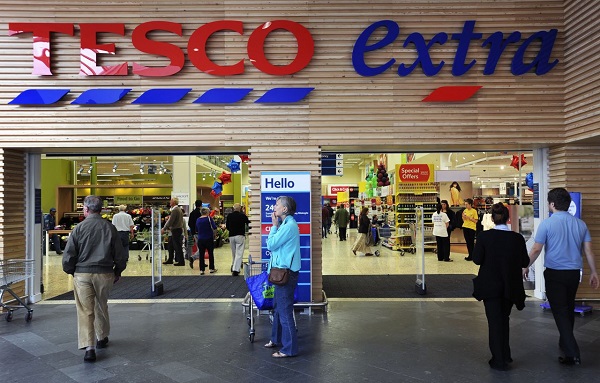 In (I would guess) around three months’ time, letters will start arriving in the mailboxes of grocery brand manufacturing companies across the land. Of course I can’t predict the exact wording, but perhaps they will be something like this:
In (I would guess) around three months’ time, letters will start arriving in the mailboxes of grocery brand manufacturing companies across the land. Of course I can’t predict the exact wording, but perhaps they will be something like this:
“Dear Supplier. Your brand is delisted. Thanks for all the support, especially the money and fees, over the years. It’s been great,
Love Tesco
PS – We’re planning to clear all of the shelves at the beginning of June so we’ll send you an invoice for the write off of any obsolete stock at the time.
Joking aside, Tesco’s recent announcement that they were going to cut 30% from its entire range may have been welcomed by retail observers and shopper marketing experts, but will have sent shivers down the spines of many of Tesco’s suppliers. Tesco could be culling around 25,000 products – what on earth happens to the companies that supply them, and should they be worried? Well, yes and no. Let’s take a look at how smart grocery brands and companies should plan, respond, and pre-empt the threat of a critical delist. We’ll use Tesco as an example, but as shopping habits change, and retailers respond to the economic realities that this brings, it would be foolish to ignore the possibility that other retailers in the UK, and large retailers globally, may be considering similar actions. What should grocery brands around the world do when facing the prospect of a critical delist from a major customer?
Don’t panic
If your brand, or one of your products get delisted, it is tempting to panic, and to see this as all doom and gloom. And don’t get me wrong: for some grocery brands a Tesco listing is critical, and it could mean factory closures, redundancies, or at the least some badly dented sales projections. I certainly don’t want to make light of that. But in many cases, Tesco’s delist strategies will be to get rid of products which don’t sell very well. In most cases, Tesco are probably hastening an eventual reality – the brand was probably living on borrowed time. Often such products have sales propped up by price promotions and making very little profit for the manufacturer. Many grocery brands, put bluntly, deserve to die. Does this make the consequences any less sad? Certainly not, but the blame for a poorly developed brand surely lies with the brand owner, rather than Tesco. When we’ve conducted category range reviews we’ve found some products where 95% or more of the product sales come only when the line is heavily discounted. These grocery brands really don’t have enough consumer or shopper equity to survive, and are kept there only through ‘bribes’ to the retailer in the shape of promo deals and display fees.
Don’t wait
The changes in retail have been well documented. Driven by massive changes in shopping behavior, large, established retailers have found themselves out-of-step with their customers, and are paying the price as shoppers use different stores and different channels to meet their shopper needs. Any supplier who is surprised when the letter hits the in-tray – well they deserve what they get. One of your biggest customers is about to slash their range. Don’t wait to be hit – start thinking, start analyzing, and create your own plans now!
Review your own range
Start looking at the profitability of each of your lines, and the profitability of each listing. It amazes me how many key account managers are still ignorant as to the profitability of their business with a particular retailer. Marketers and key account managers should analyze which products are likely to be delisted, and how much will it hurt. You may find that there are lines that you want to get rid of – in those circumstances a proactive proposal to Tesco may be well received. Proactively suggesting some of your own lines to be removed (as well as, perhaps, some of your competitors) may be seen as an objective stance, may gain retail support, and might help defend some of the listings that you wish to keep.
Review your own retail strategy
Most manufacturers over-invest in big customers. Larger margins, more fees, more head space and more resource. This is understandable. But if your current ‘major customers’ aren’t going to deliver the growth you need for whatever reason, then it is only fair to reconsider that investment: to consider reducing it and re-allocating it to other customers which offer a better return on investment.
Build a case for the defense
Many slow selling lines deserve to be kept on. Perhaps they are unique, and are important to a certain group of shoppers. Maybe they are part of a category which is important to the image of the retailer; where the retailers would be better off maintaining a wide range, even if the sales don’t justify it. Perhaps the product is new, and growing fast, and will be important in the future. If there is a case, don’t wait for the guillotine to drop; make your case now.
Take it as a blessing in disguise
25,000 lines are going to go. Tesco will I am sure get many of the delists right. Some perhaps not. But if a grocery brand is so reliant on one customer that this is a do or die moment, then I would submit that the brand has a health problem regardless. Whether or not your brand is under threat; whether or not you get one of those nasty letters, take this as an opportunity. Most businesses have products and listings that lose money. Take this as an opportunity to focus your business on the products and brands that add real value to consumers and shoppers; that deliver for retailers and deliver for you. Identify those, and fight for them!
Tuning brands to deliver for consumers, shoppers, retailers and their owners is what we do. If you’d like to talk things through, please let me know.



